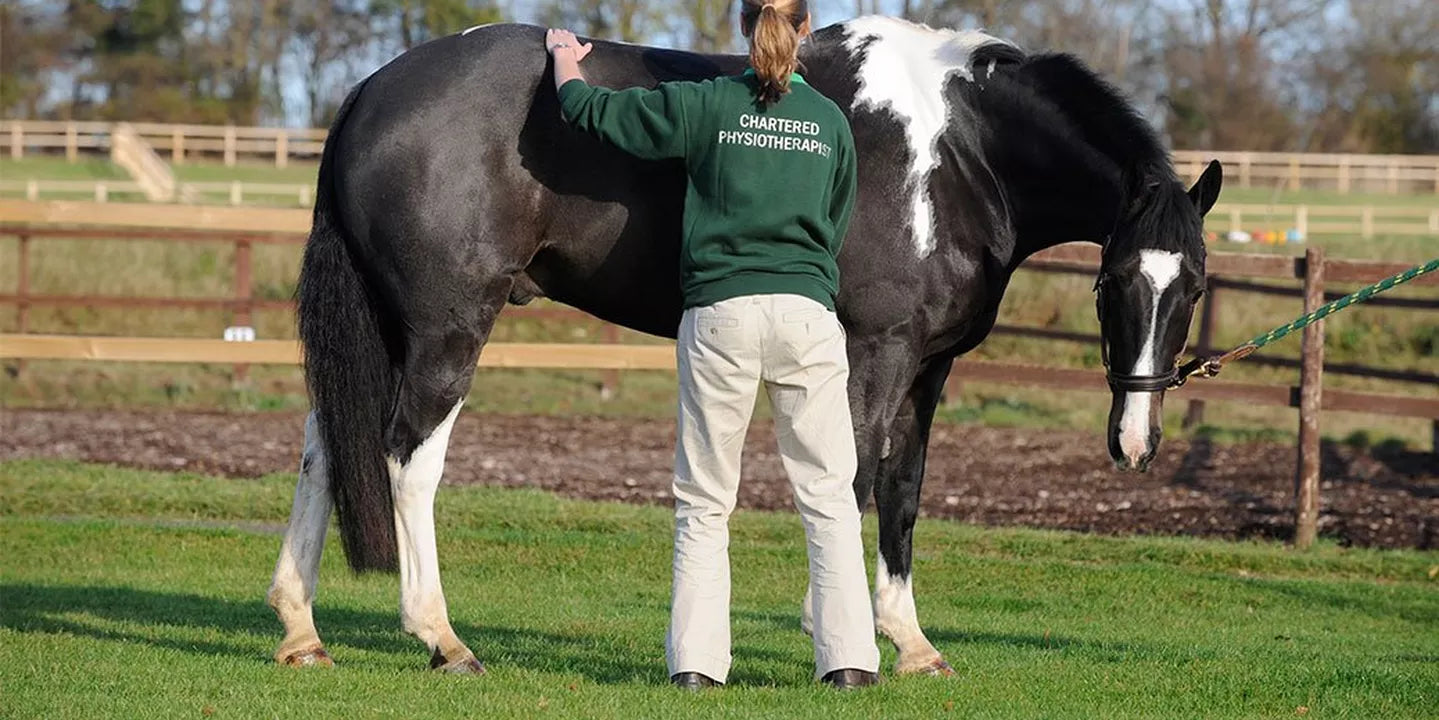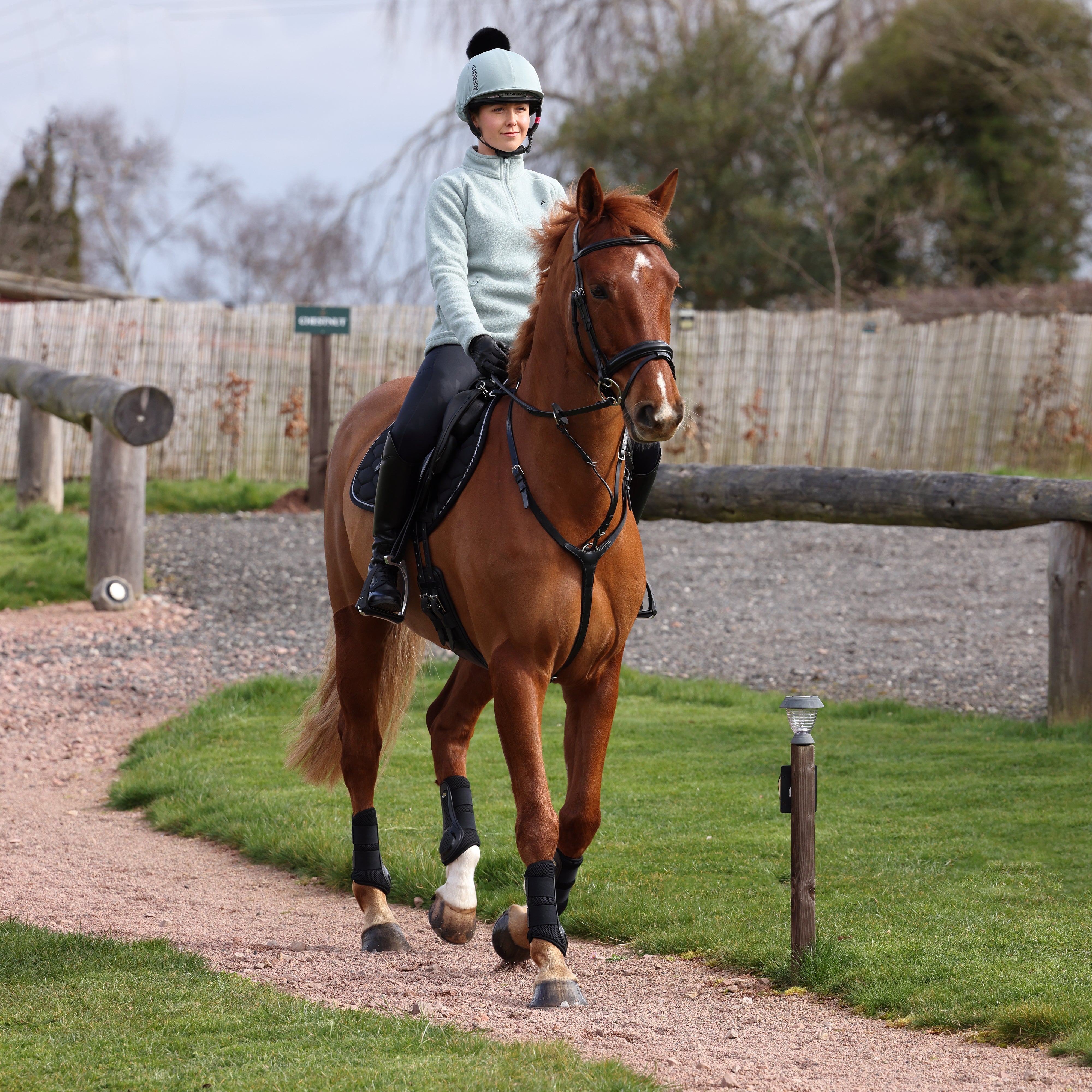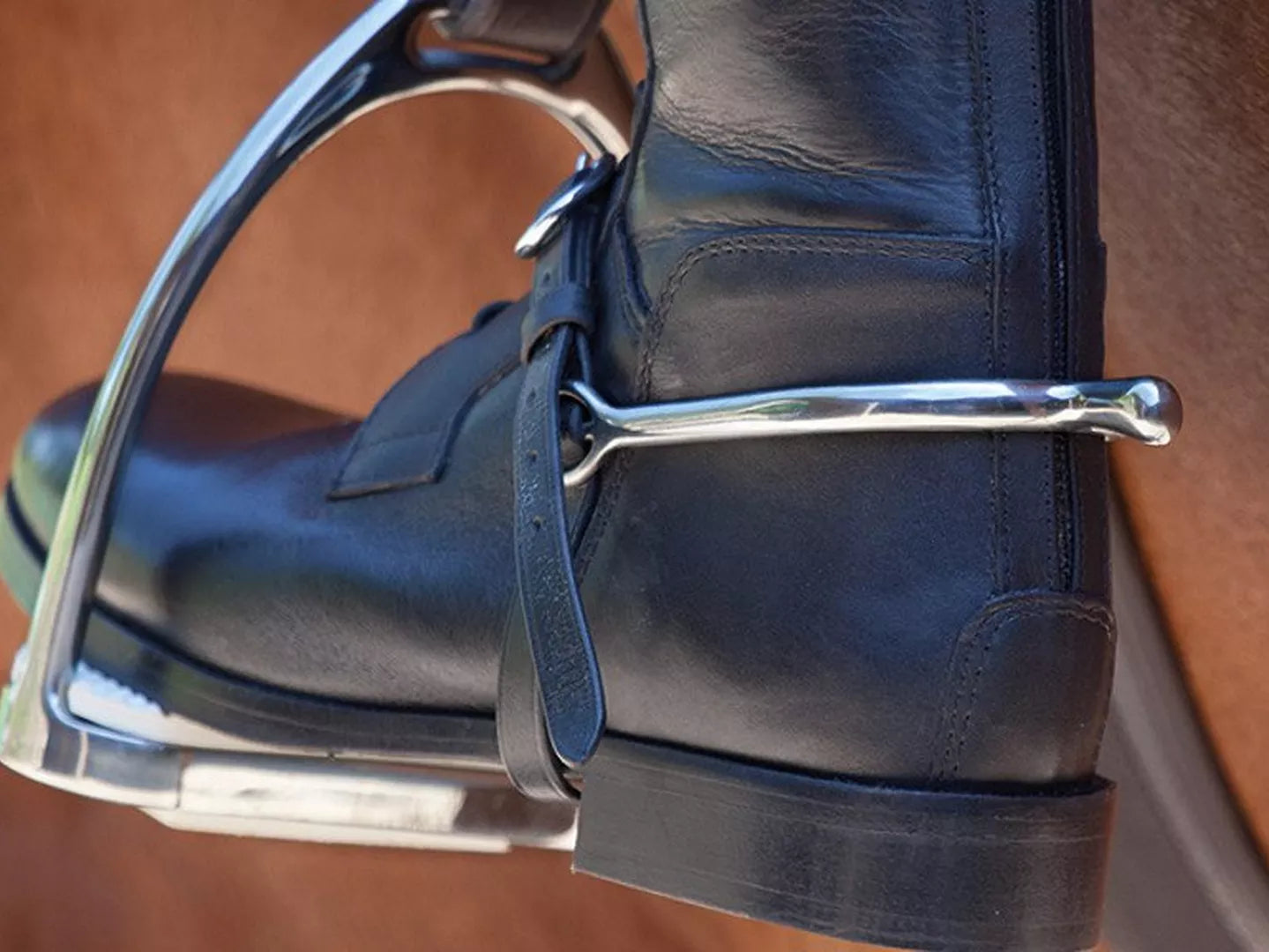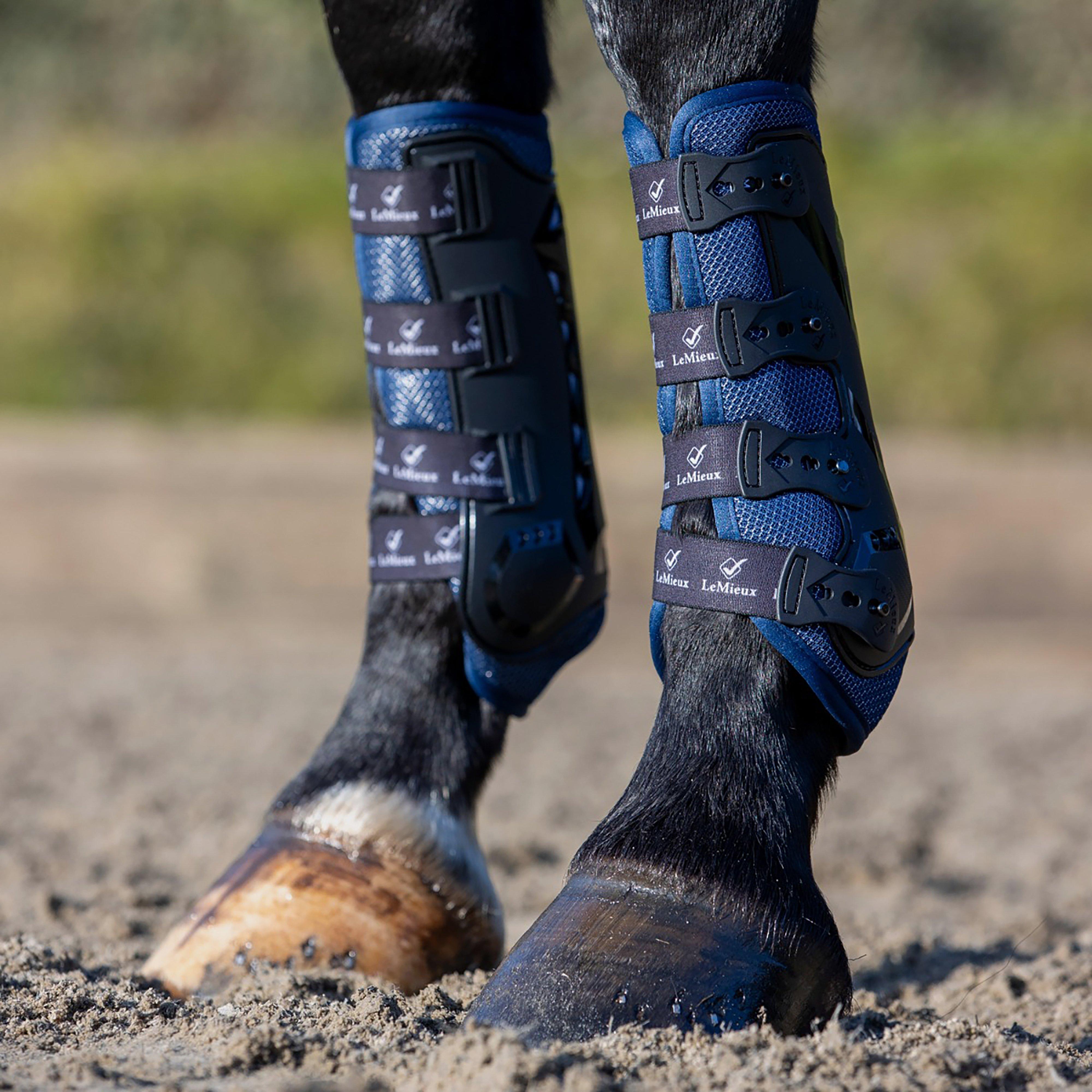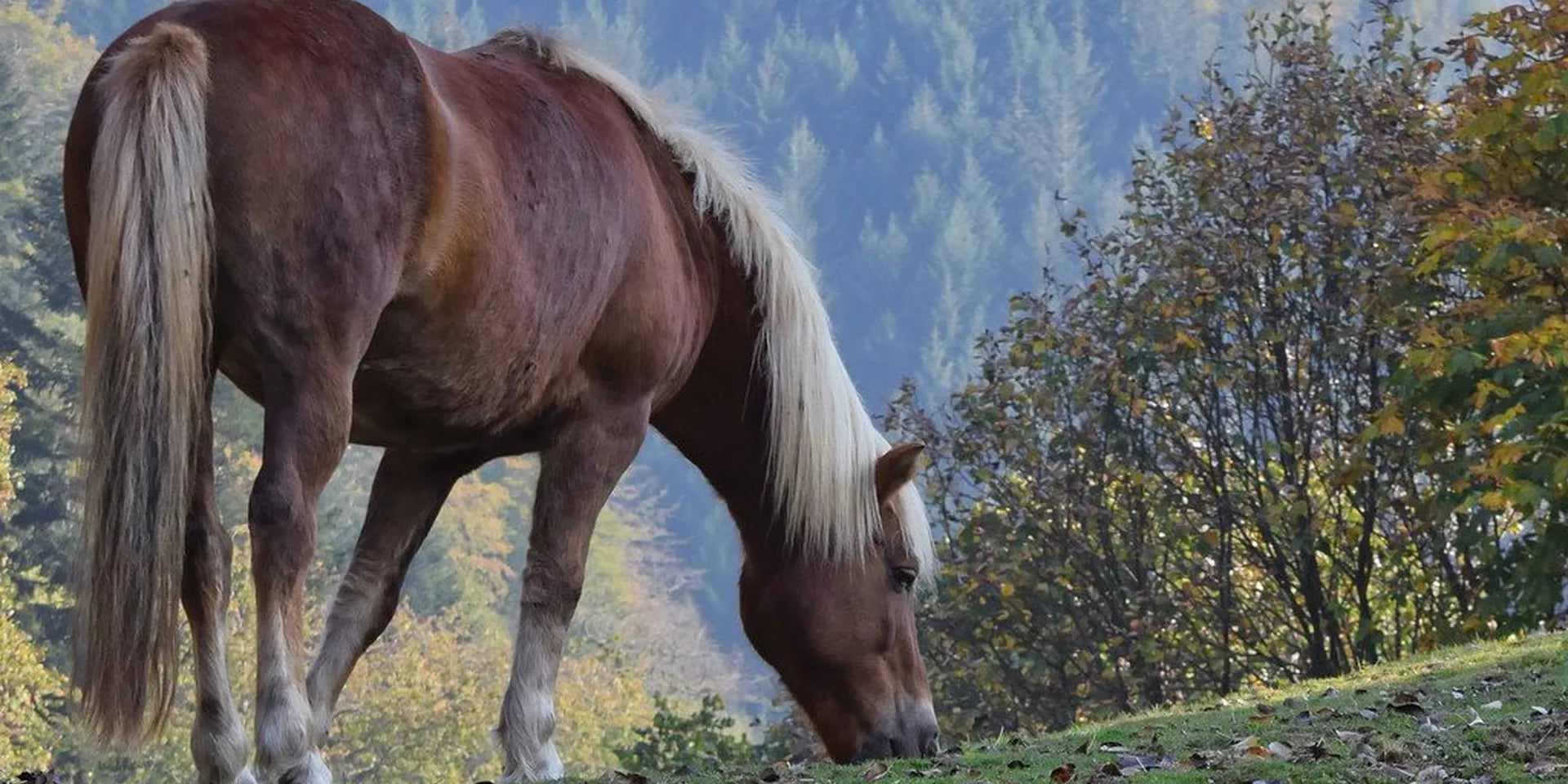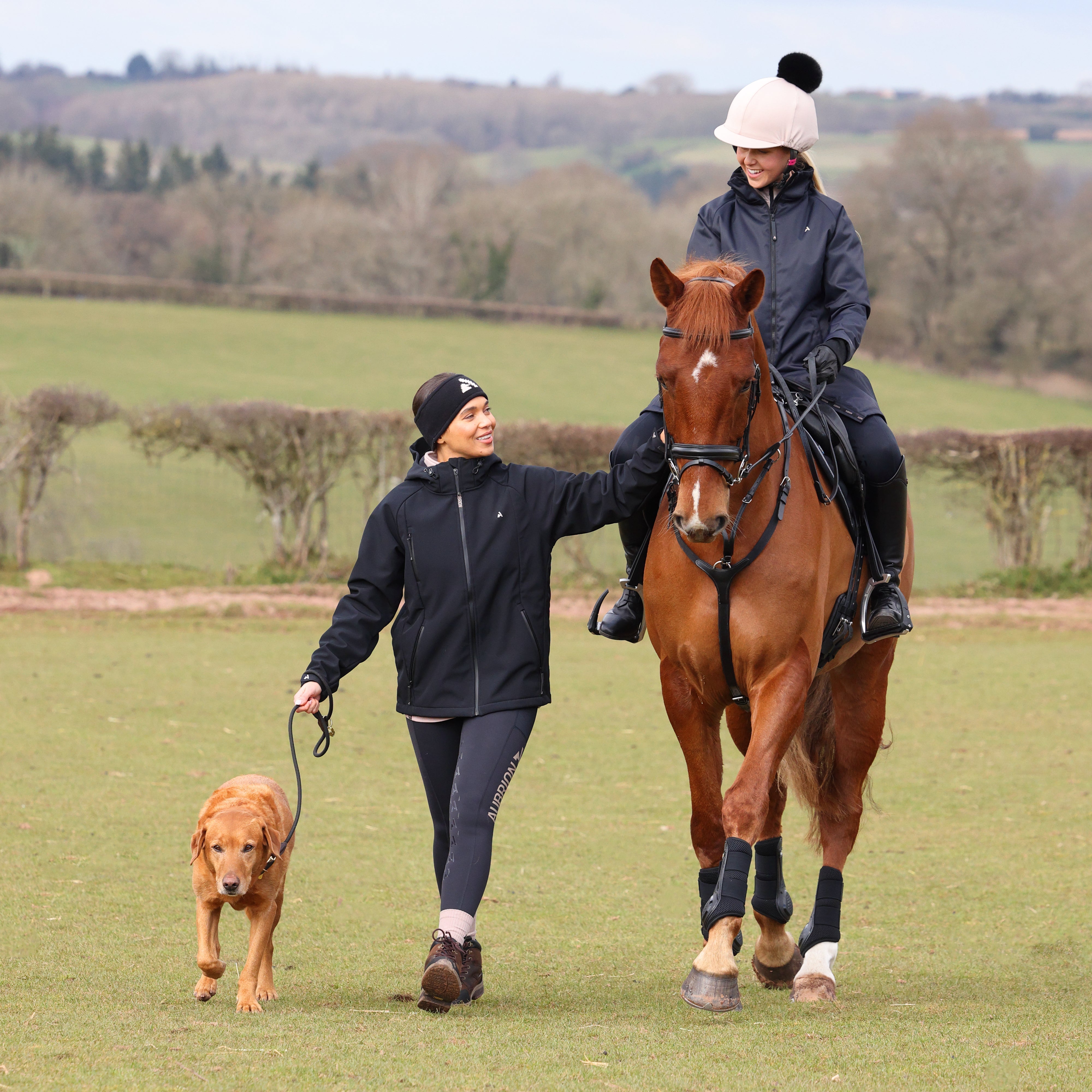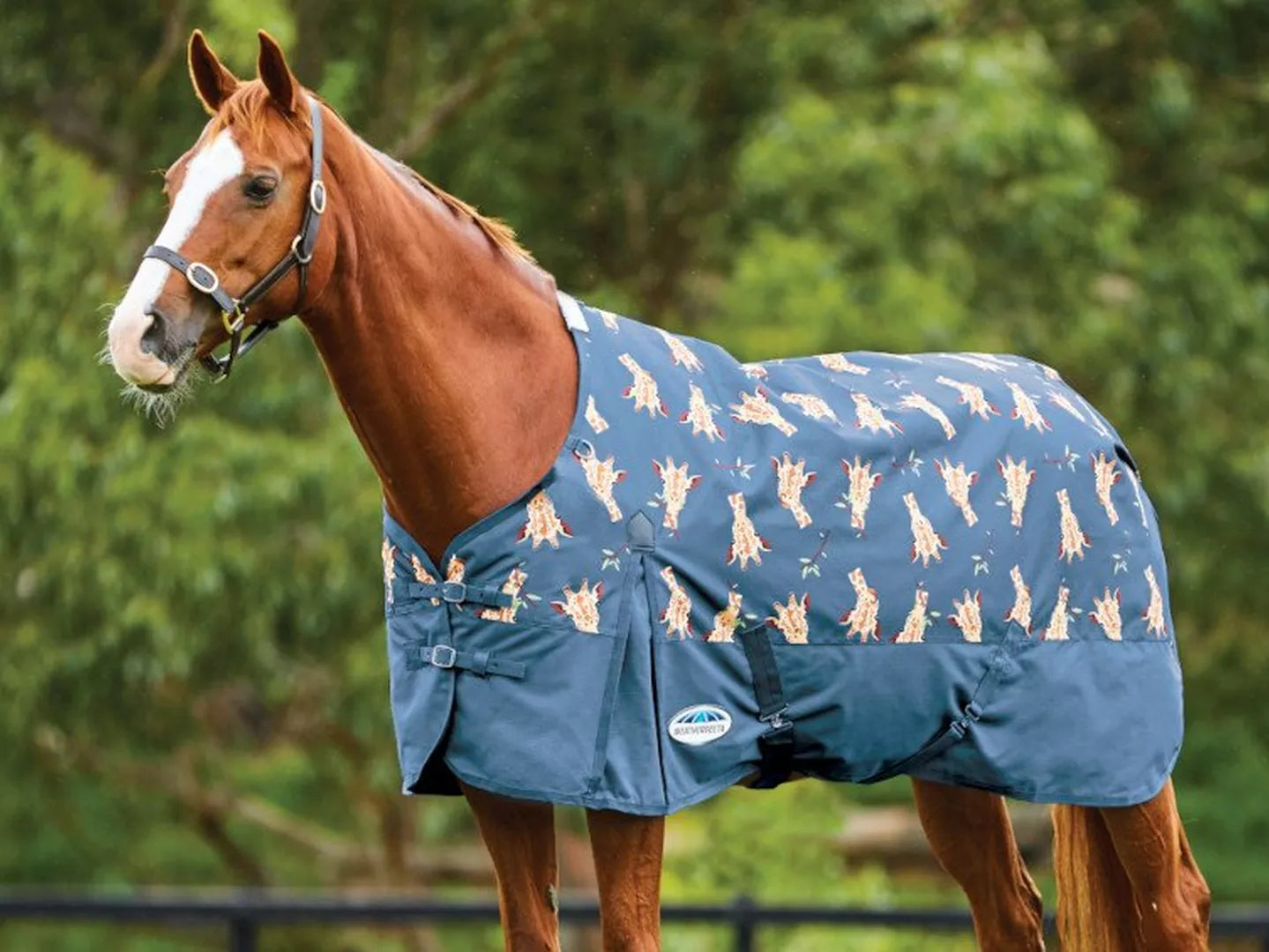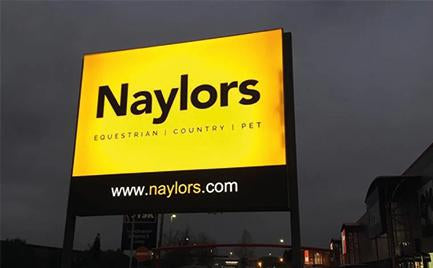Human athletes use massage and stretching exercises to prepare and recover from training and competing, so equine massage therapy is becoming more and more popular for our supreme athlete – the horse! That said is equine massage therapy really any good for our horses?
I know as a horse owner I have consulted a horse physiotherapist on numerous occasions to look at my mare when I have encountered issues, and we are not super star performers by any means! This has always been with permission from my vet.
There are so many different types of therapy out there these days, it can be a bit of a minefield. We have everything from veterinary, natural, holistic to airy fairy therapies to choose from and it can be scary to know which one to choose! Our vets these days can be not too helpful either when they offer a non-commital opinion, probably to ensure they don’t lose out on £££’s but also due to insurance and potential liability cases…

Image Courtesy of ACPAT

Image Courtesy of ACPAT
It is important to understand there are a number of associations out there:
Always seek permission from your vet prior to starting any kind of massage therapy or physiotherapy.
Ask your vet to recommend a Veterinary Physiotherapist, as most physiotherapists offer equine massage therapy as well as joint mobilisation, electro therapy (laser & ultrasound), rehabilitation and strength physiotherapy along with specific stretches for specific problem areas.
There are a number of associations that offer their own courses and qualifications towards animal rehabilitation physiotherapy. Most of these associations are reputable and have very talented and very good physio and massage therapists. But do bare in mind their depth of knowledge rather than just letters after their names… This field is very much unregulated at the moment and there are some people out there posing as qualified therapists.
The British Equine Veterinary Association is working to create a clear training path along with regulated standards for this industry.
So what is Equine Sports Massage? Here is a brief description:
Equine Sports Massage Therapy is the therapeutic application of hands-on massage techniques for the purpose of increasing circulation, relaxing muscle spasms, relieving tension, enhancing muscle tone, and increasing range of motion in high performance horses.
In basic terms Equine Massage Therapy works the soft tissues and muscles of the horse to improve movement, flexibility and to aid healing.
Equine Massage Therapy Techniques (sometimes called movements or manipulations) include the following:
- Laying on of Hands – a resting position to connect with the horse
- Nerve Stroking – uses the finger tips or palms of the hands to allow your horse to increase his awareness of his body, helps to relax the horse and affects the central nervous system.
- Effleurage – a gliding stroke done with the palm, whole hand, fingers and or arm. This movement opens the tissue/muscle to get ready for other movements.
- Petrissage – is one of the main movements in massage which is a kneading action to increase the circulation to the tissue and to soften the muscle tissue. It also prepares for deeper therapy.
- Compression – uses the palm or fist in a lift and press motion. Another form of compression is direct pressure using a hand, thumb, arm or elbow into the muscle and waiting for the muscle to soften.
- Vibration – is used to affect muscles and joints below the superficial tissue. Vibration in a superficial way will stimulate and soothe your horse, or used more deeply will help to break up restrictions and adhesions within the tissue.
- Friction – is only used once the muscle and tissue is ready and open (see above techniques), it is used to break up adhesions and scar tissue.
- Shaking – is used to increase circulation and help a horse relax an area he is holding tension in.
- Tapotement – is used to stimulate and wake up the horse, also to increase circulation. It can be used prior to exercise to warm up the horse’s muscles. There are many variations of Tapotement.
- Effleurage is then used to close the muscles and drain the area of fluids that have been loosened up in the muscle. It can also be used after a heavy workout to drain the area of toxins and lactic acid.

Image Courtesy of ACPAT

Image Courtesy of ACPAT

Image Courtesy of ACPAT
So when might your horse need to have an Equine Massage Therapy session?
Your horse may be showing signs of pain or discomfort if he displays any of the following symptoms, equine massage therapy might help with these problems:
- preference to one rein
- lateral stiffness
- reluctant to canter on one lead
- high head carriage/ hollow back
- bucking / rearing
- head shaking
- dislikes being groomed
- uneven stride length
- holding the head to one side / lack of bend and flexion at the poll
- carrying the tail to one side
- cold backed
- girthing issues

A very uncomfortable horse!
Your vet may well prescribe a Veterinary Physotherapist to see your horse 2 to 3 times per year for specific problems such as loss of performance, injury and especially if rehabilitation is needed. An Equine Massage Therapist would then be prescribed for maintenance of the soft tissue integrity and structures. The two professions can compliment each other very well with massages helping to maintain the work of the Physio between sessions.
When should you NOT use Equine Massage Therapy?
There are times when you absolutely should not use equine massage therapy, the effects of it should be not be underestimated, below are some examples:
- heart conditions
- malignant cancer
- raised temperature
- pregnancy
- skin conditions
- nervous conditions
- broken bones
- infection
Any qualified Equine Massage Therapist or Veterinary Physiotherapist will ask you for this information before commencing treatment, it is important that they are made aware of these conditions before treatment is started, and in all cases veterinary permission will be needed before a treatment plan can be agreed.
Reasons why we use Equine Massage Therapy:
To Prevent – prevention is always better than a cure, equine massage therapy will maintain and balance the musculoskeletal system, optimising the body to allow itself to heal naturally. Some horse owners may want to have annual or six monthly checkups as a preventative measure. Others may have more regular sessions, professional horse athletes may have weekly sessions, more if competing.
Did you know?
60% of the horses body weight is muscle? Small muscle injuries can take up to 90 days to become apparent (attitude, decreased performance and lameness) – prompt attention can enhance the horse’s performance and prevent further problems in the future or more serious injury.
To Rehabilitate – equine massage therapy aids recovery, reduces swelling and fluid within the soft tissues. Massage optimises the conditions in the body to allow it to heal itself. Massage therapy aids all the horses’ systems to work together more effectively and efficiently, which creates a happier and healthier horse with improved performance. N.B. Please note your horse must be cleared by the vet before commencing any massage therapy following injury or ill health.
To Identify – equine massage therapy can help to identify and pin point the problem areas and the compensating areas that are affected by the route of the problem. Not all vets can spend an hour or more diagnosing your horse, so an equine massage therapist can help the vet immensely by finding the issue and then agreeing a treatment plan with your vet. N.B. Please note your horse must be cleared by the vet before commencing any massage therapy, insurance companies will want to know that the vet has authorised any physiotherapy or massage therapy.
What are the Benefits of Equine Massage Therapy:
- Pain Relief
- Injury prevention
- Stress Relief
- Increased flexibility & freedom of movement
- Increased / Improved circulation
- Improved coat
- Improved muscle tone
- Improved posture
- Improved immune system support
- Influence of the Autonomic Nervous System – massage can move the body from a stressed state in the Sympathetic Nervous System to a more relaxed state of the Parasympathetic Nervous System – known as the “Relaxation Respone”.
- Trust and a better connection with your horse on a mental and emotional level. You can take a massage course, that can teach you to massage your own horse. Please note you will only be allowed to work on your own horse during and after the course, you will not be qualified to treat your horse from a medical / remedial perspective. These types of courses are designed to enable you to connect with your horse on an emotional level – i.e. such as a nice grooming session with your horse.
- Your Veterinary Physiotherapist or Equine Massage Therapist may show you some exercises or stretches to do with your horse to enable you to help maintain the work that they have done. Again this for your horse only and a qualified therapist would not provide you with any tools / skills that could damage your horse.

Image Courtesy of ACPAT
What to look out for when choosing an Equine Massage Therapist:
Ok, this is the scary part, as mentioned earlier this is an unregulated industry.
- ALWAYS consult your vet and ask your vet to recommend a Veterinary Physiotherapist or Equine Massage Therapist.
- Any physiotherapy or equine massage therapy must have been prescribed by your vet.
Hear a qualified veterinary physiotherapists perspective as she warns of the potential dangers of using unqualified massage therapists, please read her experience below:
There are good physios, chiros and massage therapists out there but there are also a lot of charlatans and at present it is not easy for animal owners to be able to tell which are true qualifications as there are so many ‘made up’ letters after some peoples names. Certain individuals have even been known to call them selves ‘Doctor’ without a single qualification!!!!! I recently went to treat a horse which had previously been diagnosed with a fractured pelvis by a chiropractor ARGGHHHHHH! This chiro did not even refer back to the vet and hadn’t gained vet consent before treating and was happy to diagnose something as serious as a pelvic fracture without a single radiograph or veterinary examination. After talking to the owner I discovered that this chiropractor didn’t have a single qualification and charged £150 per session and the horse had to travel to him!! These sort of incidents are becoming more and more common which is extremely frightening! All I can do is keep doing my job, abide by the law (by gaining vet consent, before treatment and always referring back to the vet if I suspect an undiagnosed underlying condition) and just hope the law tightens up soon!!!
The British Equine Veterinary Association (BEVA) is working to help pull together all the qualified professionals and to ensure that the system is regulated for training and professional standards.
Most Horse Physiotherapists are horsey people too, so they should have a very good understanding of the horse overall. Obviously they will be trained and qualified to understand the anatomy and structure of the horse and how to work, move and manipulate the muscle and soft tissue for positive results.
If in doubt consult your vet and have your vet and physiotherapist work together, so much damage can be caused by incorrect treatment. Horses although large animals can still feel pain like we can and they are made up of a very complex structure, which can break very easily.
Like us humans, most horses will find equine massage therapy very enjoyable and you will find a number of products on the market that enable you to massage your horse safely and at home, whether that be to warm up, cool down or to help alleviate back issues. The Equilibrium Massage Therapy Pad and Mitt are clinically proven to promote relaxation, improve back flexibility and increase stride length. I would advise using any equipment like this with approval and guidance from your vet and your veterinary physiotherapist.

I truly believe that horses can and will benefit from massage therapies and physiotherapy, but I do think that it is very important to check that you are using a fully qualified and experienced veterinary physiotherapist, who comes with recommendations from your vet. Do not take Jo Bloggs word for it, as this could be detrimental to the well being of your horse.
It would be a tragedy to think you were helping your horse, yet actually making it worse and then potentially not being covered by your insurance when you finally get the right people in to fix the problem.
How upset and devastated would you be if that nice relaxing massage you planned for your horse turned into nightmare?
What are your experiences with physio and massage for your horses? How often do you use your equine massage therapist / veterinary physiotherapist for your horse?
Has anyone had a really bad experience when using equine massage therapy/physiotherapy?
What positive experiences have you had from equine massage therapy?
I’d love to hear your thoughts, opinions and experiences…
